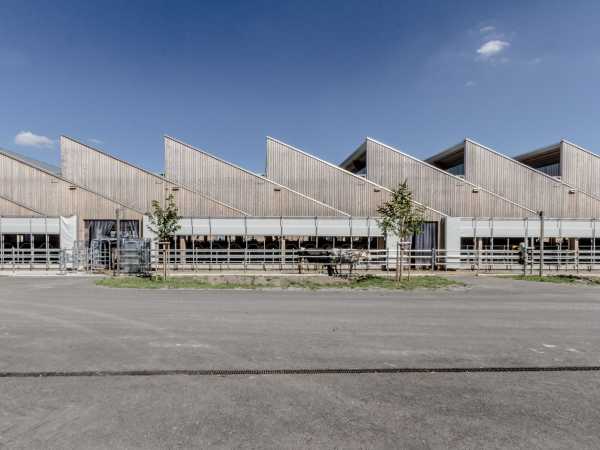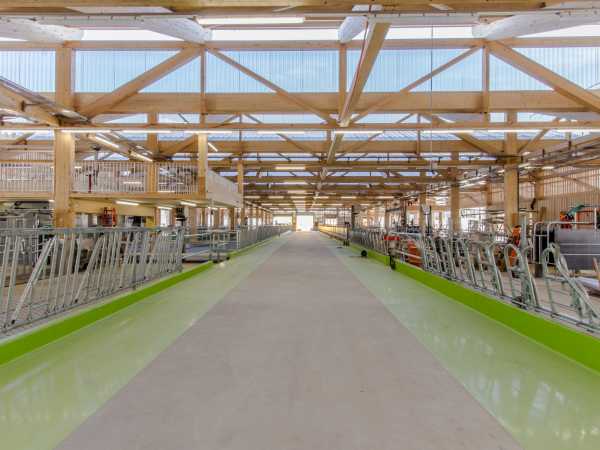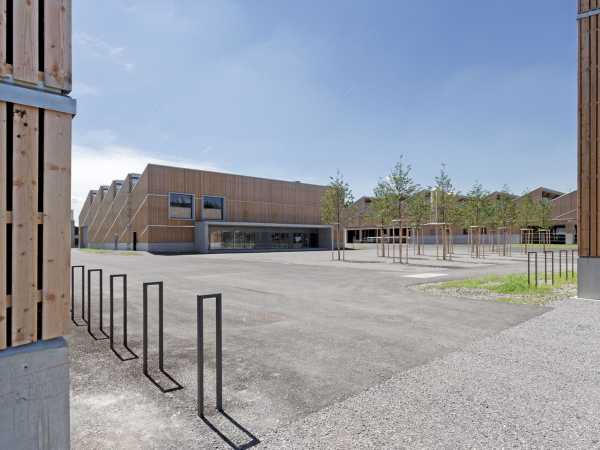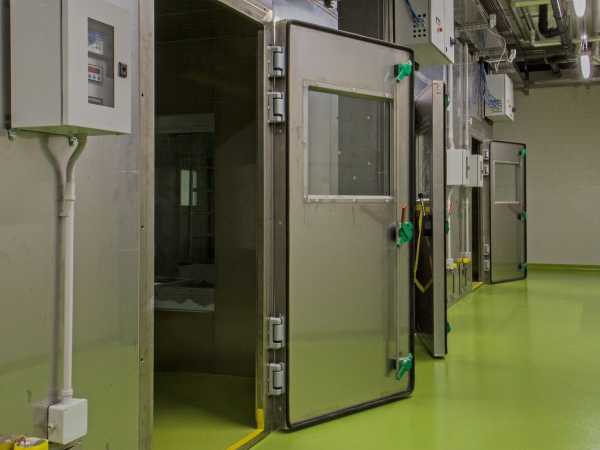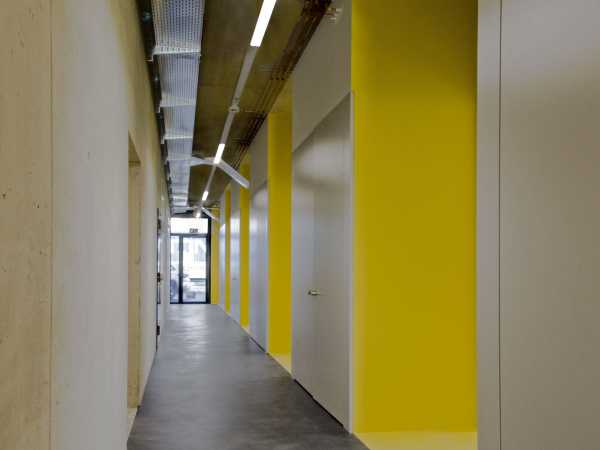Agrovet-Strickhof officially opened
ETH Zurich, the University of Zurich and the canton of Zurich today held an official opening ceremony at Agrovet-Strickhof, their joint collaboration in the livestock sector. The modern facilities will allow the participating ETH professorships to conduct interdisciplinary research with direct links to agricultural practice. Open days are to be held on the weekend of 2–3 September.
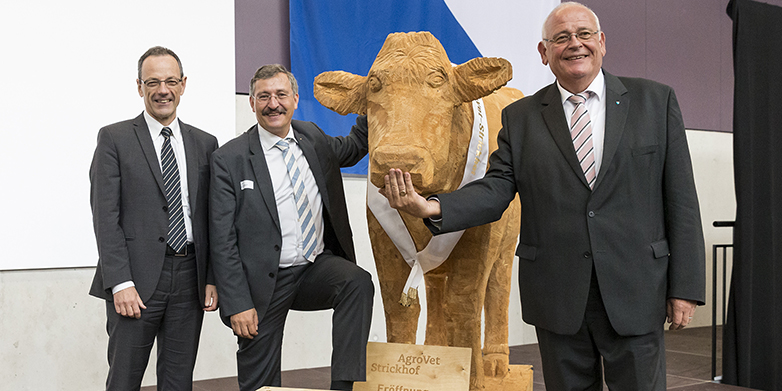
With today’s opening of Agrovet-Strickhof, ETH Zurich is beginning a new chapter of a story that began more than ten years ago. In 2006, the Executive Board took the strategic decision to bolster agricultural sciences, as they are the key to some of the central issues of our time – such as the world’s growing population, climate change and sustainable land use. In order to find sound answers to these challenges, a university needs not only the best minds but also the appropriate structures and infrastructure.
Thus, ETH established the Department of Environmental Systems Science and the World Food System Center, and decided to join forces with the Vetsuisse faculty of the University of Zurich and the Strickhof, the agricultural cantonal competence of the Canton of Zurich. Agrovet-Strickhof was beginning to take shape.
From feed to food
At the Strickhof site in Lindau (ZH), a series of new buildings with state-of-the-art facilities have been built over the last few years. The aim is to be able to investigate the value chain according to a holistic “from feed to food” approach – in other words, from feed production to the animal to the foodstuff.
The new metabolic centre is of particular importance to ETH. With respiratory chambers for large and small animals and a metabolic shed, researchers can use it to study the foundations of efficient and environmentally friendly livestock systems. On the ETH side, three professors from the Institute of Agricultural Sciences will be particularly active at the new facilities:
Michael Kreuzer, Professor of Animal Nutrition, has supported the project closely from the outset. Today, he serves as ETH’s representative on the Agrovet-Strickhof management team, which comprises one representative from each of the three participating institutions. “The major added value of Agrovet-Strickhof lies in the close connection between fundamental and application-oriented research. This allows stimuli to flow in both directions,” says Kreuzer. For example, in a joint research project with Strickhof staff, Kreuzer’s group is investigating whether milk and milk products differ in quality if the cows eat hay instead of silage.
Close links to practice
Susanne Ulbrich, Professor of Animal Physiology, also sees Agrovet-Strickhof’s potential for establishing excellent links between research and practice: “It is essential to bear the whole animal in mind during research. The physical proximity of agricultural scientists, veterinary surgeons and people actually working in farming ensures that we can exchange ideas on an ongoing basis and on many different levels.” Ulbrich is convinced that this new platform for collaboration will raise the ETH Zurich’s international profile significantly. The opportunities associated with Agrovet-Strickhof were also a key factor in her decision to accept a professorship at ETH.
The same applies to Hubert Pausch, who has been Professor of Animal Genomics since May this year. The new facilities allow him to measure characteristics of individual animals precisely, and to draw conclusions about the function of specific positions in the genome. Over the last few weeks, together with his group and staff from Strickhof, Pausch has begun to genotype every single one of Agrovet-Strickhof’s cattle as a basis for developing an efficient breeding programme. He is looking forward to an even stronger interdisciplinary collaboration and says: “For me, the feedback from the animal keepers who see the animals every day and notice anomalies immediately is just as important as exchanging ideas with other scientists.”
Pulling together
In his welcome speech, ETH President Lino Guzzella also emphasised the value of this type of collaboration: “Interdisciplinarity is one of the most important keys to innovation.” He then joined Head of the Cantonal Building Department Markus Kägi, Michael Hengartner, Rector of the University of Zurich, and Bernard Lehmann, former ETH professor and now Director of the Federal Office for Agriculture, for a special unveiling ceremony.
In addition to the main location at Lindau, the Agrovet-Strickhof collaboration also includes the operating sites of Früebüel on the Walchwilerberg in the canton of Zug and Alp Weissenstein in the canton of Graubünden. This allows research projects to be conducted at different altitudes. ETH Zurich sold its former lowland operating site – the Chamau research station at Hünenberg – to the canton of Zug in the course of the Agrovet-Strickhof project. In the next few years, the aim is also to establish close collaboration with ETH’s research station for plant sciences, which has been operating in the immediate vicinity of Strickhof since the early 1970s.
Open days
On Saturday and Sunday, 2 and 3 September 2017, from 9.30 a.m. to 5.00 p.m., all the Agrovet-Strickhof facilities in Lindau will be open to visitors. Researchers and people working in practice will present their work and offer insights into current projects; for example, a test to see whether it’s possible to tell the difference between hay and silage milk. The programme will be rounded off with children’s activities and musical interludes, including from the ETH Big Band.
Further information: external pagewww.agrovet-strickhof.chcall_made
The new Agrovet-Strickhof facilities (Images: Stücheli Architekten, Karin Rohländer)

